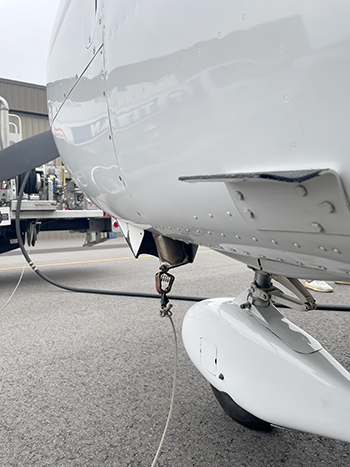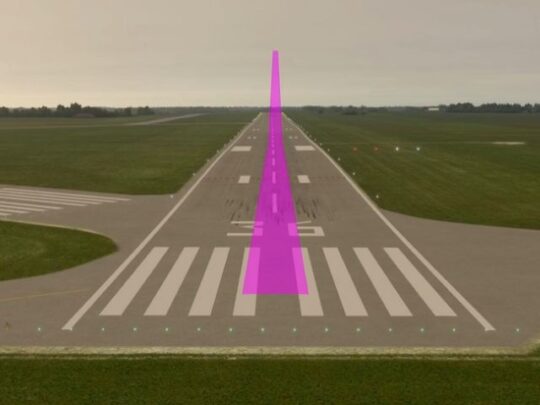Subscriber question:
"I’ve seen people ground their airplane for fueling on the gear, the exhaust, and the tie down ring. Is there a right way, or does it just not matter?” —Anna O.
Tom:
 “Many people ground before fueling with all the concern of hichin’ Bessie to a post before going into the tavern. Grounding deserves more attention.
“Many people ground before fueling with all the concern of hichin’ Bessie to a post before going into the tavern. Grounding deserves more attention.
Airplanes generate static electricity just moving through the air; thus the static wicks common on the trailing edges of the flight control surfaces—to give the electricity an easy path off the airplane. When the flying stops, so do does the wicking away of static charge. You might even generate a charge as you move about the airplane. Dry air and wool fabric, for example, combined with a little friction, can easily build a small charge. This residual charge could arc to the fuel nozzle as you near the filler port—unless you have properly grounded the airplane.
But the location of that ground wire matters. Few GA manufacturers specify in the pilot operating handbook where to attach the wire and even fewer GA airplanes have a grounding lug for this purpose.
To do its job, the wire must have an electrically conductive path to the fuel port. Corroded surfaces should be avoided for connection because they degrade the electrical path. Similarly, painted surfaces are less conductive than unpainted ones, although in most cases clipping to a portion of the painted landing gear or a painted tiedown ring will not present a significant danger. An unpainted portion of the nosegear structure, an unpainted tiedown ring, or an exhaust stack will usually work well. However, the best way to test a location for your airplane using an ohmmeter and a long jumper wire. Clip one end of the wire to your desired location and the other to one of the clips on the ohmmeter. Clip the other connector line from the ohmmeter to the filler neck. The resulting resistance shown on the meter should be less than one ohm. If you’re not familiar with voltmeters/ohmmeters, seek the help of your local aviation technician.
Remember that even the movement of fuel through the nozzle and into the filler port can generate static electricity. Keep the metal nozzle in contact with the metal ring on the filler port to prevent a spark.”
Where do you connect a ground wire on a light airplane?

